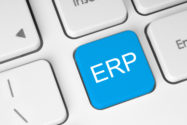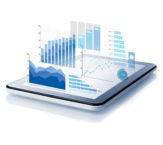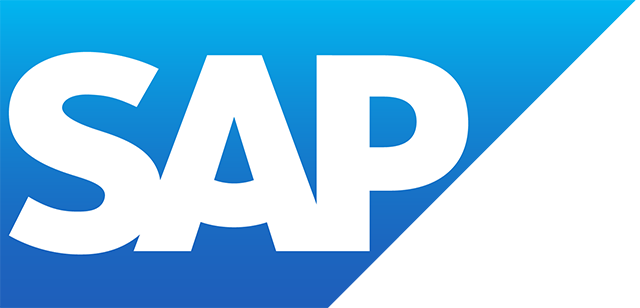SAP Enterprise Architecture Framework
Filter By
Browse By
- SAP Analytics and AI
- SAP Application Development and Integration
- All SAP Application Development and Integration
- SAP ABAP
- SAP ABAP Development Tools
- SAP ABAP Test Cockpit
- SAP API Management
- SAP BAPI
- SAP Basis
- SAP BRF
- SAP Business Application Studio
- SAP CMS
- SAP Design Studio
- SAP Development Tools
- SAP DevOps
- SAP EAI
- SAP EDI
- SAP Extension Suite
- SAP Fiori
- SAP Fiori Elements
- SAP Integration Suite
- SAP Low Code Application Development
- SAP Low Code Automation
- SAP Netweaver
- SAP Release Management
- SAP UI5
- SAP Web Application Server
- SAP Web IDE
- SAP Business Process Management
- SAP Center of Excellence
- SAP CIO
- SAP Customer Experience
- SAP Data and Data Management
- All SAP Data and Data Management
- SAP BW
- SAP BW/4HANA
- SAP Crystal Reports
- SAP Data Archiving
- SAP Data Center
- SAP Data Governance
- SAP Data Integration
- SAP Data Migration
- SAP Data Quality
- SAP Data Services
- SAP Data Strategy
- SAP Data Visualization
- SAP Data Warehouse Cloud
- SAP DMS
- SAP Document Control
- SAP EIM
- SAP ETL
- SAP ETL Tools
- SAP HANA
- SAP HANA Administration
- SAP HANA Deployment Infrastructure
- SAP HANA Studio
- SAP Master Data
- SAP Master Data Governance
- SAP MDM
- SAP Enterprise Architect
- SAP Enterprise Asset Management
- SAP ERP
- SAP Finance
- All SAP Finance
- SAP Accounting
- SAP AR AP
- SAP Asset Accounting
- SAP Billing Systems
- SAP BPC
- SAP BRIM
- SAP Cash Management
- SAP Central Finance
- SAP Controlling
- SAP COPA
- SAP Cost Center Accounting
- SAP Currency Risk
- SAP e-invoicing
- SAP FICO
- SAP Finance Automation
- SAP Advanced Financial Closing
- SAP Financial Consolidation
- SAP Financial Planning
- SAP FX Risk
- SAP General Ledger
- SAP Global Tax Management
- SAP Hyperion
- SAP Order to Cash
- SAP Payment Processing
- SAP Profitability Analysis
- SAP Rebate Management
- SAP S/4HANA Finance
- SAP SWIFT Compliance
- SAP Treasury Management
- SAP Universal Journal
- SAP Governance Risk and Compliance
- SAP Human Capital Management
- SAP Intelligent Technologies
- SAP Platform and Technology
- All SAP Platform and Technology
- SAP Business Technology Platform
- SAP Cloud
- SAP Cloud Connector
- SAP Cloud Integration Platform
- SAP Cloud Migration
- SAP Cloud Platform
- SAP Cloud Providers
- SAP Cloud Strategy
- SAP Digital Signature
- SAP Container Platform
- SAP HANA Enterprise Cloud
- SAP Digital Asset Management
- SAP Smart Forms
- SAP HEC
- SAP Digital Integration Hub
- SAP Hyperscalers
- SAP Infrastructure
- SAP Messaging
- SAP Quality and Testing
- SAP Security
- SAP Spend Management
- SAP Supply Chain Management
- All SAP Supply Chain Management
- SAP APO
- SAP Asset Management
- SAP Business Network
- SAP Digital Manufacturing Cloud
- SAP Digital Twin
- SAP EWM
- SAP IBP
- SAP Inventory Management
- SAP Label Printing
- SAP Logistics
- SAP Manufacturing
- SAP Manufacturing Automation
- SAP MES
- SAP MII
- SAP MM
- SAP MRO
- SAP MRP
- SAP Order Management
- SAP Plant Maintenance
- SAP PLM
- SAP Production Planning
- SAP S&OP
- SAP SD
- SAP SPM
- SAP Supply Chain Planning
- SAP Track and Trace
- SAP Transportation Management
- SAP System Administration
What is SAP Enterprise Architecture Framework?
Based on The Open Group Architecture Framework (TOGAF), the SAP Enterprise Architect Framework (EAF) was developed to be an extension of TOGAF with the intention of supporting customers with an extensive SAP footprint. TOGAF and SAP EAF are intended to be complementary, with TOGAF 8.1 being the foundation for SAP EAF, and TOGAF 9.0 and higher being enhanced by contributions from the SAP EAF. The SAP EAF was initially developed by SAP to support the effective adoption of packaged software in a services-oriented enterprise.
What is SAP Enterprise Architecture Framework?
Based on The Open Group Architecture Framework (TOGAF), the SAP Enterprise Architect Framework (EAF) was developed to be an extension of TOGAF with the intention of supporting customers with an extensive SAP footprint. TOGAF and SAP EAF are intended to be complementary, with TOGAF 8.1 being the foundation for SAP EAF, and TOGAF 9.0 and higher being enhanced by contributions from the SAP EAF. The SAP EAF was initially developed by SAP to support the effective adoption of packaged software in a services-oriented enterprise.
While the TOGAF 8.1 Architecture Development Method (ADM) provides a narrative of each phase and describes the phase in terms of objectives, approach, inputs, steps, and outputs. What the SAP EAF adds is specific guidance around concepts, tasks, and terminology. In addition, narratives, worksheets describing outputs, and accelerators that can be leveraged for the ADM are included in the SAP EAF. The SAP EAF also provides a level of process flexibility that allows customers to focus on a target architecture rather than spending time defining a current architecture. Both extensions to the TOGAF 8.1 were included in TOGAF 9.0 content.
Key capabilities in the SAP Enterprise Architect Framework:
- SAP EAF Meta Model. The SAP EAF explicitly introduced a Meta Model concept as one did not exist in TOGAF 8.1, with the Meta Model enabling a comprehensive view of the entire enterprise architecture. The Meta Model classifies the enterprise into contextual and architectural elements and defines EA concepts into defined entities. These entity relationships provide the basis for a scheme for many enterprise architecture modeling tools.
- SAP EAF Artifacts. SAP EAF expanded on what was in TOGAF 8.1, which only provided a list of sample architectural views, to organize artifacts into Catalogs, Matrices, and Views (or Diagrams). The artifacts are integrated into the SAP EAF Process and Meta Model, and customers can leverage guidance and examples in SAP EAF to develop these artifacts.
- SAP Specific Mappings. The biggest area of distinct content for the SAP EAF is in providing content level guidance for organizations with a large SAP footprint. Mapping SAP content can help customers accelerate their efforts to develop their enterprise architecture as it includes references and mappings to SAP business, application, and technical content.
The SAP Enterprise Architecture Framework can offer specific advantages to SAP customers, and complements TOGAF to accelerate the development of an enterprise architecture for their business.
1252 results
-

Evolution of ERP Systems in the Digital Era
Reading time: 9 mins
By Kumar Singh, Research Director, SAPinsider Changing the Paradigms of Enterprise Resource Planning Business environments, in most industries, have always been dynamic and susceptible to changes. These changes may be gradual or sudden, but the fact is, the world of business has continuously evolved through these changes. However, what we are increasingly experiencing now...…
-

Enabling Data-Driven Enterprises with Data Lakes for SAP
November 19, 2021
Today’s leading companies are leveraging the massive amounts of data generated by SAP systems, devices, and people to create new, re-imagined business processes. To turn data into a competitive advantage, companies must establish a modern data platform that can not only effectively integrate SAP and non-SAP data sources, but is also capable of supporting the…
Become a Member
Unlimited access to thousands of resources for SAP-specific expertise that can only be found here.
Become a Partner
Access exclusive SAP insights, expert marketing strategies, and high-value services including research reports, webinars, and buyers' guides, all designed to boost your campaign ROI by up to 50% within the SAP ecosystem.
Upcoming Events
Related Vendors
Your request has been successfully sent

